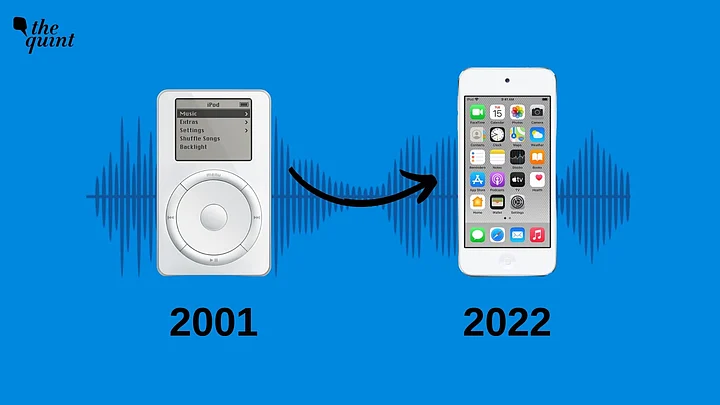Apple is finally pulling the plug on the iPod touch – the final iteration of its iconic line of portable music players. The device will now only be available while supplies last.
While the original iPod revolutionised the music industry 20 years ago, the product line gradually lost relevance after people began carrying their music with them on their smartphones.
What once used to be Apple's bestselling product – accounting for about 40 percent of the company's revenue – now accounts for only a fraction of its sales.
Here's a brief history of the iPod.
2001-2014: Classic iPod
The original iPod was introduced on 23 October 2001. It wasn't the first of it's kind, since MP3 players had been around for a while. However, it packed just the right set of features in a relatively small package.
A 5GB storage which could hold a whopping 1000 songs, intuitive controls, and a 10 hour battery helped make it an instant success.
Over the next two generations, the iPod's capacity went from 1000 songs to 10,000 songs. In 2003, Apple introduced the iTunes Store on the device, letting users easily purchase and download songs.
By the fourth generation, in 2004, the iPod came with a touch sensitive click wheel, colour display, and a shuffle feature to randomise the songs you were listening to. The fifth generation, in 2005, brought with it a bigger screen, video playing capabilities and 80GBs of storage.
For two years, there were no updates. Then, in 2007, the iPod classic was unveiled with 160GB storage. This model, which was offered till 2014, would be the last of the original iPod line.
2004-2005: iPod mini
The short lived iPod mini, which was introduced on 20 February, 2004, was nearly half the weight of the regular iPod.
It was the first to feature a click wheel with buttons integrated into it, allowing for one-handed navigation, and could hold up to 1,000 songs. The device was available in five colours, just like the iMac.
The second generation of the iPod mini, released in 2005, was its final one. The product line was replaced by an even more compact iPod nano.
2005-2017: iPod nano
The wafer thin iPod nano was introduced on 25 September, 2006. Instead of a hard drive, it came with a flash memory and could store 2000 high quality songs on its 4 GB storage.
Steve Jobs called it "a full-featured iPod in an impossibly small size".
Over the next few generations it got a better screen, an aluminium casing and expanded storage.
The fifth generation added a camera, a mic, a speaker and a much awaited FM radio, which had been missing from previous models. By its seventh and final generation, the iPod nano was fully touch screen.
It was discontinued in 2017.
2005-2017: iPod shuffle
The iPod shuffle, the smallest of Apple's music player offerings, followed a trajectory similar to iPod nano's. Introduced in 2005, it was the first iPod without a screen. It just had a rocker ring and play/pause button in front.
It had a small capacity of about 240 songs.
The next few iteration saw it become smaller and cheaper. The fourth generation, introduced in 2010, would be its final. The iPod shuffle was also discontinued in 2017.
2007-Present: iPod touch
iPod touch, the final and most advanced variant of the music player, was launched in 2007 along with the iPod nano, the iPod shuffle and, crucially, the iPhone, the device that would pull the shutter on the iPod era.
The touch looked remarkably similar to the iPhone and even ran the same operating software, with some of the features missing. It had the same 3.5 inch touch screen, web browsing and Wifi capabilities, and iOS apps.
The following year, in 2008, iPod sales hit their peak of about 55 million. From 2009, sales started falling for the first time as the iPhone became Apple's bestseller.
Over the next few generations, the iPod touch became faster and more feature rich. By 2010, it had retina display and even a front facing camera.
The seventh and final generation of the iPod touch came out in 2019. It was a bit of a surprise as the there hadn't been any updates since 2015. The device was mainly aimed at parents who wanted to give their kids a smartphone with limited functionality.
Now, in 2022, Apple has bid adieu to the iPod altogether.
(At The Quint, we question everything. Play an active role in shaping our journalism by becoming a member today.)
